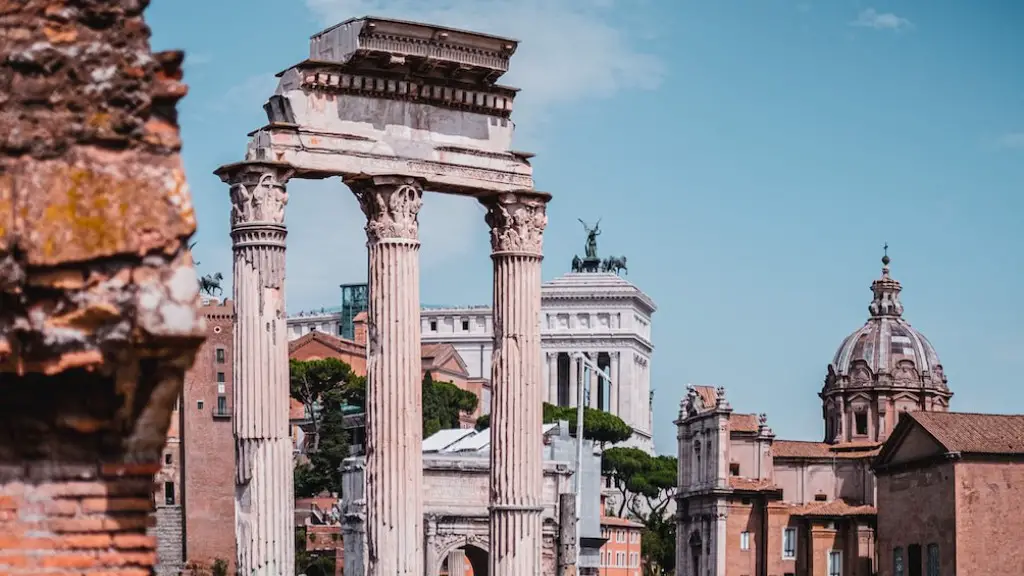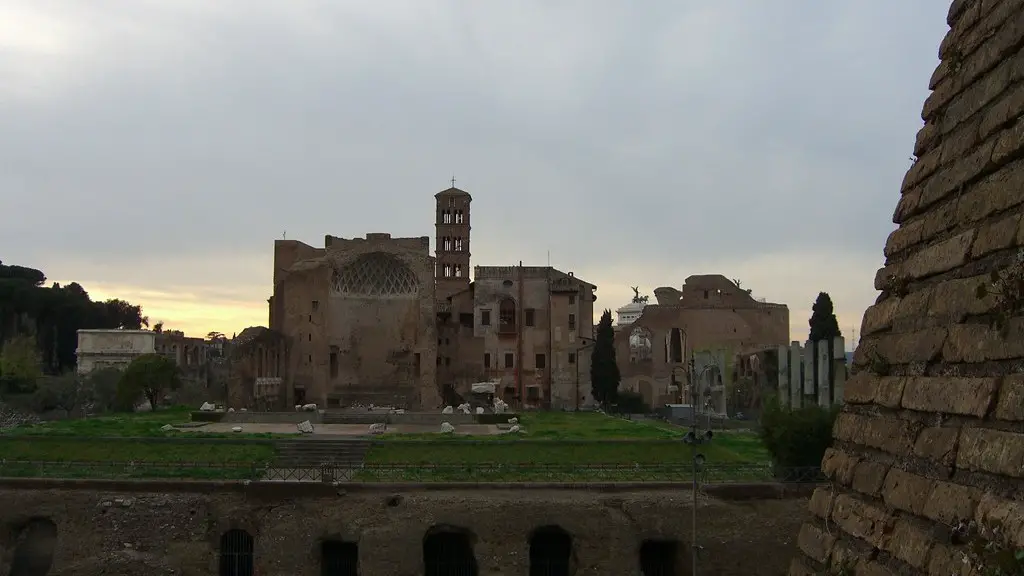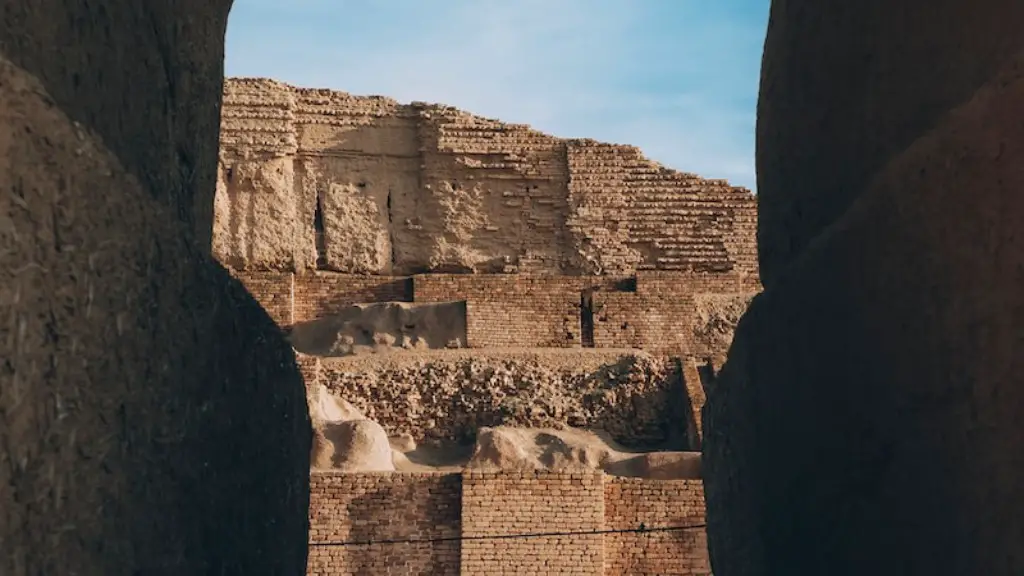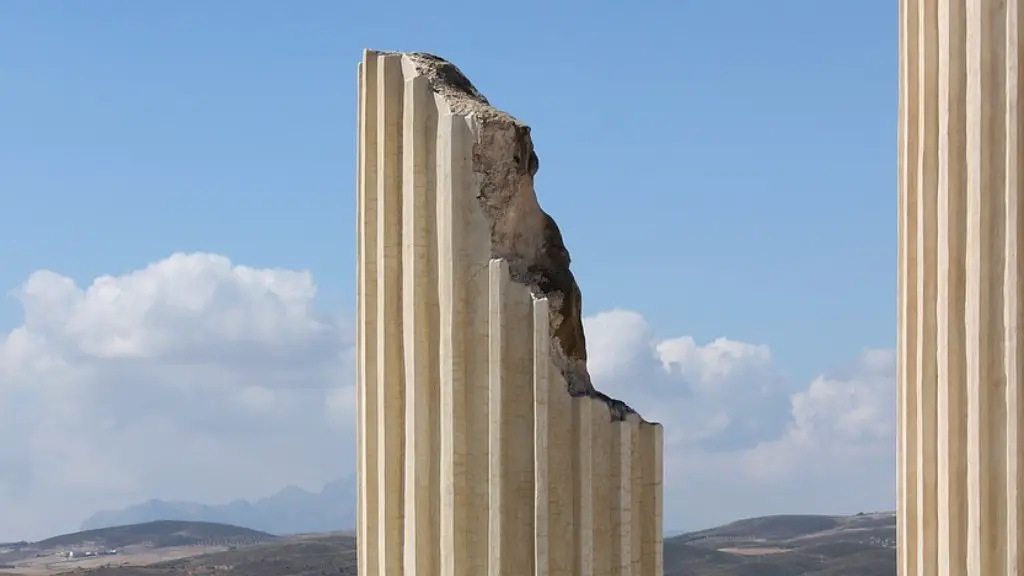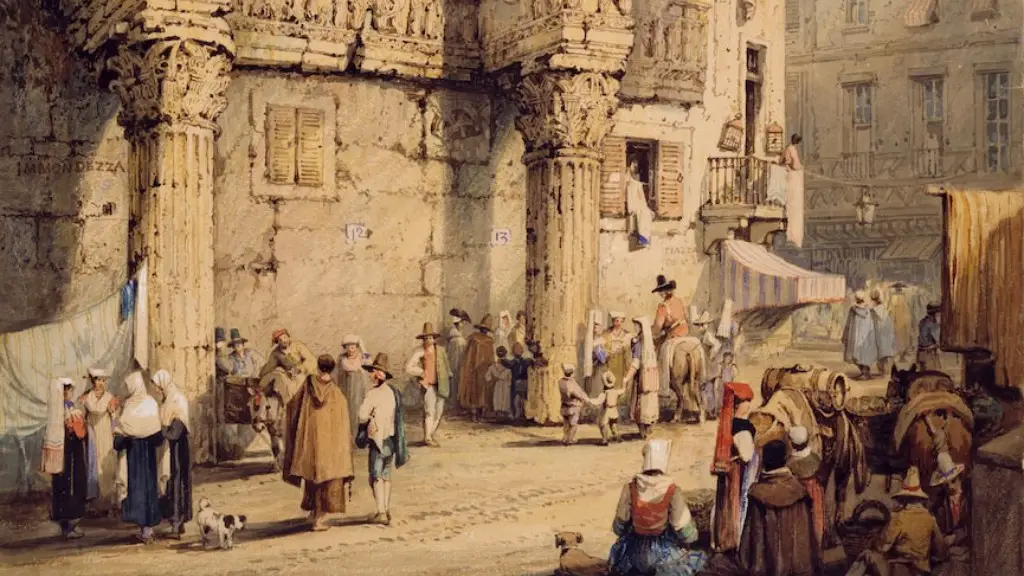What the Colosseum Looked Like in Ancient Rome
The Colosseum in Rome is one of the grandest and most recognizable pieces of architecture in the world. It is an iconic symbol of the golden age of the Roman Empire and the legacy of Roman civilization. It has been a source of inspiration and admiration for centuries, attracting visitors and scholars from around the world. But what exactly did the Colosseum look like in its heyday?
Built around 70-80 AD, the Colosseum was originally known as the Flavian Amphitheatre. It measured 188 metres long and 156 metres wide, making it the largest amphitheatre in the world at the time. It was made of stone and concrete, and was four stories tall, with seating for up to 50,000 spectators. The Colosseum could be seen from virtually anywhere in Rome, dominating the skyline of the city.
To the ancient Romans, the Colosseum was a place for entertainment and spectacle. Hundreds of gruesome gladiatorial battles were held here, as well as other forms of entertainment, such as animal shows and dangerous re-enactments of famous battles. The Colosseum also held special contests and religious festivals, where emperors displayed their power.
The entrance to the Colosseum was intricately decorated, with statues of famous Roman gods, heroes and emperors. The main gate, known as the Porta Triumphalis, was lined with marble statues and a frieze depicting the triumphal procession of the emperor.
Inside the Colosseum, the seating was divided into four tiers. The lower tier was reserved for senators, while the second and third tiers were for the general public. The top tier, known as the pulvinar, was decorated with beautiful mosaics and statues of Roman gods. It was reserved for the emperor, who presided over the events from atop his marble throne.
The Colosseum was also filled with music and the sounds of cheering spectators. Trumpets, horns and drums were used to announce the start of shows, and when the gladiators entered the arena, the noise of the crowd swelled to a feverish pitch.
The Colosseum was truly a sight to behold in ancient Rome. It embodied the grandeur and extravagance of the Roman Empire and served as a reminder of its greatness. Even today, its walls tell a story of a bygone age, when Rome was the centre of the world.
The Origins of the Colosseum
The Colosseum in Rome first came about on the orders of Roman emperor Vespasian in 72 AD. After his death, his son, Titus, took over the project and completed it in 80 AD. The Colosseum was built to host gladiatorial shows, theatrical performances, and public spectacles, including re-enactments of famous battles.
The Colosseum was built of specially-treated stone and concrete, with an outer wall measuring 188 metres long and 156 metres wide. It was designed in a typical Roman style – an oval arena surrounded by a tiered seating area, where spectators could view the events in the arena. The outer walls were also decorated with statues and carvings depicting famous Roman figures.
The Colosseum quickly became an iconic symbol of the city of Rome and the Roman Empire. It was one of the largest amphitheatres of the Ancient Roman world and is still standing today.
The History of the Colosseum
The Colosseum in Rome was the centre for gladiatorial combat and public spectacles for almost 500 years. It was there that people from all over the Roman Empire gathered to witness the bloody spectacles of gladiatorial combat and the extravagant plays of dramatists and poets.
The Colosseum was also used for religious ceremonies and performances, such as the Secular Games that were held every 100 years. In 313 AD, under Constantine, Christianity became the official religion of the Roman Empire and the Colosseum became a Christian site, used primarily for religious ceremonies. The Colosseum was finally destroyed by an earthquake in the 6th century.
However, the Colosseum still stands today, albeit in a ruined state. It is one of the most visited monuments in the world and is a testament to the grandeur and power of the Roman Empire.
Architectural Features of the Colosseum
The Colosseum in Rome was a spectacular feat of architectural engineering for its time. It measured 188 metres long and 156 metres wide and was four stories tall, with seating space for up to 50,000 spectators. The walls were decorated with marble statues and carvings of famous Roman figures, and the seats were divided into four raised tiers.
The Colosseum also featured a subterranean level accessed by 80 entrances. This level was used to keep wild animals and gladiators, and had artificial vents that allowed sea-water to be put into the arena, so that convincing naval battles could be re-enacted. The Colosseum had another level built above the seats, which was designed to hold the velarium – a retractable canopy that provided shade for the spectators.
The Colosseum was designed to be grand and extravagant, and this is evident in its many architectural features. Its walls are decorated with statues of gods, heroes and emperors, and the entrance is lined with friezes depicting the triumphal procession of the emperor. Its four tiers of seating were designed to allow every visitor a clear view of the events in the arena. Even today, the Colosseum is a breathtaking example of ancient Roman architecture.
Modern Uses of the Colosseum
The Colosseum was a monument to the grandeur and power of the Roman Empire in its heyday. Today, it is still a popular destination for tourists from all over the world, who come to marvel at its grandeur and to imagine what life must have been like in ancient Rome.
The Colosseum has also been used for concerts, plays, and other forms of entertainment. In 2017, a 3D light show was projected onto the walls of the Colosseum to commemorate the 2,000th anniversary of the death of Augustus. Concerts have also taken place inside the Colosseum, including a massive concert staged by The Rolling Stones in 2014.
The Colosseum in Rome is also a UNESCO World Heritage Site and has become a popular symbol of Rome and the Italian nation. It is celebrated in art, literature and film, and is a source of national pride.
Controversies Surrounding the Colosseum
The Colosseum in Rome has long been a source of controversy due to its association with gladiatorial combat and public executions. In recent years, there has been a growing movement to end the use of the Colosseum for violent re-enactments and shows. Animal rights activists have also criticised the use of animals in shows at the Colosseum, pointing out the cruelty and suffering inflicted on animals.
The Colosseum has also been used to promote commercialisation and has become a symbol for tourism in Rome. It is regularly used for advertising and commercial events, much to the dismay of many Romans. The Colosseum is a symbol of a bygone era and many believe that it should not be used to promote modern-day products and services.
The Colosseum in Rome is an iconic symbol of the Roman Empire, but it has also become a source of contention in recent years. Its association with gladiatorial combat, public executions and animal cruelty has caused controversy. It is also seen as a symbol of commercialisation by many in Rome and has been used for advertising and other commercial events.
Restoration Projects at Colosseum
The Colosseum in Rome is an iconic symbol of the grandeur and power of the Roman Empire and is one of the most visited monuments in the world. As such, it has been the recipient of numerous restoration projects in recent years, aimed at preserving the structure and conserving its artifacts.
In 2016, a major project was launched to restore the Colosseum and remove years of built-up pollution and dirt. The project also included the installation of security cameras and a new metal gate at the entrance, which is used to control the flow of visitors into the Colosseum. Another restoration project in 2018 focused on repairing broken pieces of the Colosseum and restoring its original appearance.
The Colosseum has also been the subject of numerous archaeological and conservation projects aimed at uncovering its past and preserving its artifacts. In 2019, a major excavational project unearthed a rare mosaic depicting a chariot race, which is thought to be from the 4th century AD.
The Colosseum in Rome has been the recipient of numerous restoration projects in recent years, aimed at preserving its structure and uncovering its past. These projects have helped to give the Colosseum its due as one of the most iconic landmarks of the Roman Empire and as an important symbol of Rome and the Italian nation.
Modern Tourists Attraction at Colosseum
The Colosseum in Rome is one of the most famous and popular tourist destinations in the world. Over 6 million people visit the Colosseum each year, making it one of the most visited archaeological sites in the world.
The Colosseum is often referred to as the symbol of Rome and is a popular tourist attraction for visitors from all over the world. It is a popular attraction for tourists who want to experience the grandeur and extravagance of the Roman Empire and to imagine what life must have been like in ancient Rome.
Today, the Colosseum is still a popular tourist attraction and is visited by millions of people each year. It is also a UNESCO World Heritage Site, and is celebrated in art, literature and film. It is truly a remarkable monument that stands as a symbol of the greatness of the Roman Empire.
The Recent Renovations at Colosseum
Beginning in 2018, the Colosseum in Rome underwent extensive renovations in order to refurbish the structure and make it accessible to the public. In addition to the cleaning and restoration of the walls of the Colosseum, the renovations included the installation of a state-of-the-art security system with video surveillance, and the renovation of the staircases and walkways.
The renovations were completed in 2020 and the Colosseum is now outfitted with modern amenities and state-of-the-art technology, making it easier for visitors to explore and appreciate the site. The renovations included several improvements, such as the installation of lifts, ramps, and accessible bathrooms, as well as the expansion of the ticket office and the installation of free audio-guides.
The Colosseum in Rome is now a more accessible, safer and more enjoyable destination for visitors from all over the world. Its renovations have also revealed new details about its past and helped to conserve its artifacts and make them available to visitors.
Conclusion
The Colosseum in Rome is one of the grandest and most recognisable pieces of architecture in the world. Its grandeur and extravagance has made it a source of inspiration and admiration for centuries, and it is a reminder of the greatness of the Roman Empire. Its recent renovations have also made it a more accessible, safer and enjoyable destination for visitors from all over the world.
